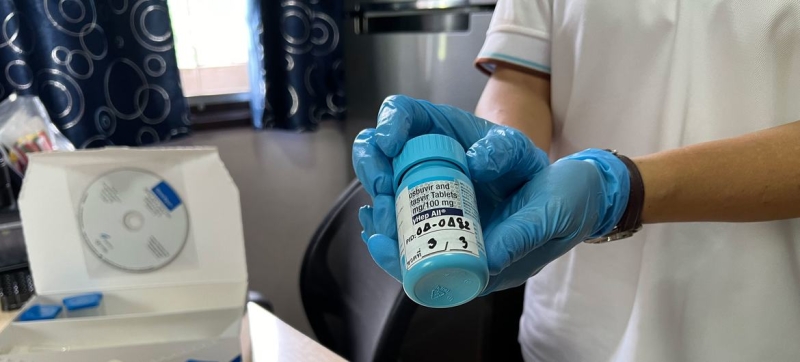
Preparing a test for hepatitis C. WHO: Hepatitis B and C kill 3,500 people every day Health
Viral hepatitis is claiming an increasing number of lives, according to the new Global Hepatitis Report from the World Health Organization (WHO). The disease, which is one of the deadliest infections worldwide, along with tuberculosis, was responsible for 1.3 million deaths in 2022. Ten countries, including Russia, account for almost two-thirds of the global burden of hepatitis B and C.
The report presented at the World Hepatitis Summit highlights that despite improvements in diagnostics and treatment, as well as lower drug prices, growth in testing and treatment coverage has stalled. However, achieving the WHO’s 2030 elimination target is still possible if immediate action is taken now.
A worrying picture
The number of deaths from viral hepatitis increased from 1.1 million in 2019 to 1.3 million in 2022, based on new data from 187 countries. Of these, 83 percent were caused by hepatitis B, and 17 percent by hepatitis C. Thus, every day in the world, 3,500 people died from hepatitis B and C.
“This report paints a worrying picture: despite global progress in hepatitis prevention, deaths are rising because too few people are being diagnosed and treated,” said WHO Director-General Tedros Adhanom Ghebreyesus. According to him, WHO intends to support countries in using at affordable prices all available means to combat the spread of infection and save lives.
Read also :
World Hepatitis Day: one life – one liver
According to updated WHO estimates, in 2022, 254 million people were living with hepatitis B and 50 million with hepatitis C, 12 percent of whom were children under 18 years of age. Men account for 58 percent of all cases.
New data indicates a slight decrease in incidence compared to 2019. However, the rate remains high, with 2.2 million new cases of viral hepatitis reported in 2022, up from 2.5 million in 2019. Thus, more than 6 thousand people were infected every day.
Gaps in diagnosis and treatment
According to WHO estimates, according to At the end of 2022, only 13 percent of people living with chronic hepatitis B infection had been diagnosed worldwide, and approximately 3 percent of those with the disease were receiving antiviral therapy. For hepatitis C, 36 percent of those infected were diagnosed and 20 percent were treated.
These results are well below global goals of treating 80 percent of people living with chronic hepatitis hepatitis B and C by 2030. However, the data points to a small but consistent improvement from previous 2019 estimates.
Regional inequality
The WHO African Region accounts for 63 percent of new hepatitis B infections, but only 18 percent of newborns in the region receive vaccination. In the Western Pacific region, which accounts for 47 percent of all hepatitis B deaths, treatment coverage among people diagnosed with the disease is only 23 percent.

Hepatitis C disproportionately affects marginalized groups, including people who inject drugs.
The Russian Federation, China, Bangladesh, India, Indonesia, Nigeria, Ethiopia, Pakistan, the Philippines and Vietnam together account for nearly two-thirds of the global burden of hepatitis B and C, WHO says. Achieving universal access to prevention, diagnosis and treatment in these ten countries by 2025, along with increased efforts in the African region, is critical to achieving the Sustainable Development Goals (SDGs).
Availability of treatment
Despite the availability of inexpensive generic drugs for the treatment of viral hepatitis, many countries do not purchase them at such low prices.
For example, although the hepatitis B treatment tenofovir is off-patent and available at a base price of $2.40 per month, only 7 of the 26 reporting countries paid for it at or below this benchmark.
Read also:
INTERVIEW | Kyrgyzstan, Moldova and Georgia have made significant progress in the fight against hepatitis
Additionally, only 60 percent of countries with available data offer services for testing and treatment of viral hepatitis, completely or partially free of charge.
Recommendations for eliminating hepatitis
The report outlines a number of measures designed to accelerate progress towards eliminating the viral hepatitis epidemic by 2030 These include expanding access to testing and diagnostics, engaging affected communities and civil society, and advancing research to improve diagnosis and treatment.
Funding for the fight against viral hepatitis both at the global level and within the target budgets of countries is insufficient. This is due to gaps in awareness of available treatments, as well as competing health priorities, according to WHO. The Global Hepatitis Report offers countries strategies to address inequalities and ensure access to available tools at the most affordable prices.
